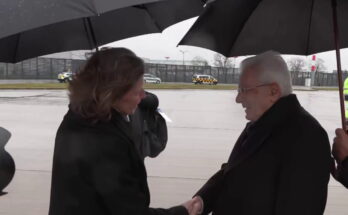In 1971, on the outskirts of the municipality of Borobia (Soria, 250 inhabitants), three Roman funerary steles depicting knights armed with spears and shields were found. They were transferred to the Numantino Museum in Soria. But shortly afterwards, in the same place, the missing part of one of them was found. Surprisingly, the piece was stored in a local agricultural warehouse. In 2024, this fragment was rediscovered and analyzed by several researchers from the Institute of Heritage and Humanities of the University of Zaragoza. The conclusions of the study of the piece, published by the magazine Archive of Spanish Archaeology, are that the plaque may represent Celtiberian warriors (Roman auxiliary troops) and that it was placed on the outskirts of the disappeared oppidum (fortified city) of Virovia. This city is known to have existed, not because there are contemporary writings about it, but because coins from its mint have been found. Until now its whereabouts have been an enigma. That is, depending on the job The warriors of Borobia. A new Latin opistographic stele from the province of Soria, Below present-day Borobia is the Celtiberian Virovia.
The fragmented stele that was completed measured approximately 140 centimeters. It has the shape of a parallelepiped and has been worked on both sides. Both depict two knights, one of whom carries a lance resting on his shoulder. On one side, an inscription reads: “For Sempronius Aninius, son of Aplonius, Charisius Ambatus paid with his money” and, on the other, “for Lucius Sempronius Ambatus, son of Aninius, he was commissioned to do so”. According to the authors of the study (doctors Marta Chordá Pérez, Borja Díaz Ariño and Alberto Jiménez Carrera), the tombstone “clearly combines Latin and indigenous elements.”
Some coins from the Virovia mint were found in the municipal area of Borobia. “The discovery of several pieces of uirouia (name of the mint), added to the proximity between the ancient and recent toponyms, leads us to suspect that this city may indeed have been found in this place.” Furthermore, the researchers add, “in several tastings carried out following the archaeological intervention carried out in the castle of Borobia (in complete ruins) in 2018, at levels strongly altered by the adaptation works of the territory in the medieval era, some Celtiberian ceramic materials were recovered, consistent with the existence of a settlement in ancient times”.
In front of the castle there is also the El Cabezo hill, about one hectare in size. This hill, according to experts, has “orographic characteristics that make it suitable to have been the home of a small hill oppidum Celtiberian”. The pre-Roman peoples built their settlements in elevated areas and protected them from enemies with walls and ditches.
Since neither the historians Pliny and Ptolemy, nor the Antonine Itinerary (a sort of Michelin Guide of the time) mention Viriovia, experts believe that the city may have disappeared in the Flavian era (1st and 2nd century) and become a Latin municipality. “It would therefore be a case similar to other Celtiberian cities located on the southern slope of Moncayo, whose names we know exclusively from their monetary minting, also dated between the last decades of the second century and the beginning of the first.” Although these oppida They have disappeared, “their toponyms have fossilized, preserved to the present day”.
Warriors on horseback, like those depicted on tombstones, can be considered one of the most rooted elements in the visual culture of the indigenous populations of the Douro Valley and the Iberian System. “Most coins minted by Celtiberian mints between the second half of the second century BC (BC) and the first decades of the first century BC show on the reverse the image of a galloping horseman, usually armed with a lance,” they explain.
The municipality of Borobia has not to date been the subject of any systematic archaeological exploration, although, unfortunately, there are indications of intense clandestine excavation activity in several places. Even so, Celtiberian and Basque coins have been located within the urban area. Among these, several from uirouia stand out, a mint that minted bronze coins in the last decades of the 2nd century BC, and which included spearmen knights.
“The iconography of the knight has played a key role in the construction of the public image of the Hispanic Celtic warrior elites since the end of the Iron Age who, starting from the 2nd century BC, began to serve more or less regularly as auxiliary troops in the Roman army. It is seductive”, they underline, “the idea that the persistence of this particular iconography on stelae from the beginning of the imperial period can be related precisely to the recruitment of auxiliary cavalry troop units in Celtiberia in the time of Augustus or his immediate successors. From the mid-1st century AD, the motif of the warrior on horseback, usually armed with a lance and sometimes attacking an enemy lying at his feet and followed by a servant on foot, became very popular in the funerary stelae of cavalry soldiers deployed on the borders of the empire.
“The peculiar iconography of the Borobia stelae therefore refers to models linked to military environments”. Since the commissioners of the gravestones and the deceased had no family ties – they surnames (praenomen, massimon) do not coincide, experts believe that they are “comrades in arms who commissioned the funeral ceremonies for their deceased colleagues”.
“The epigraphic complex found in Borobia”, they conclude, “necessarily forces us to question the hypothetical existence of a settlement of a certain size in this place. It is an area of singular strategic importance in Antiquity, since it was located on the road that connected the cities of Bilbilis (Calatayud) and Numantia (Soria), allowing access from the Jalón valley to the sources of the Duero and, moreover, it possessed considerable mineral wealth of which are documented to have been exploited since the Iron Age”.



